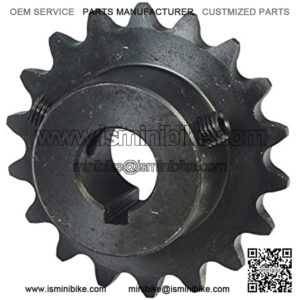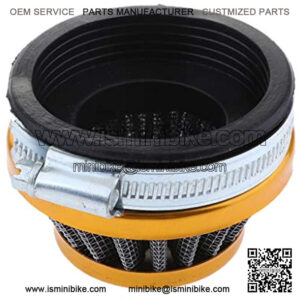1.What type of riding do you want to do?
What may not be obvious to a newcomer is that dirt bikes, like road bikes, cover quite a variety of applications. The same way you wouldn’t take a Harley Road Glide to a track day, one could say “a purebred motocross bike does not a good trail bike make”. Generally, off-road riding can be grouped into 3 different categories, determined by the terrain you intend on conquering:
Trail: “Something to boot around the cottage with” is largely indicative of a trail bike. Be it single track (narrow paths between trees), fire roads or open fields, bikes in this category cater to a more general purpose type of riding. The bikes well suited for this category will feature a mix of comfort, performance and features, with a motor that’s in a mild state of tune and with fewer maintenance requirements. Some are road legal although they are not genuinely intended for any extensive road riding. These bikes are less about lap times than they are about good times.
Motocross: A highly specialized machine, designed for closed courses (but sometimes used more broadly). Design philosophy in this category centers on big power and low weight, doing away with any non-essential creature comforts (for example, no electric start, battery, headlight or excessive seat foam). Handling favors performance over comfort and maintenance requirements tend to be higher. 2-stroke machines are still commonplace here, complented by a new crop of 4-stroke machines running high compression motors and long suspension travel for big air.
Enduro/Dual Sport: The street-legal variant of off-road machines (also known as “blue plated”). Intended for 60/40 offroad-biased riding and offering the ability to connect off-road sections with public roads (even highways). Include all the necessary parts to legally ride on public roads (EPA-ceritfied emissions sytems, headlight, tail light, mirrors, inducators, etc). What these bikes compromise on when it comes to tires, weight and performance, they give back when it comes to sheer versatility.
Supermoto (mixed with Dirt): We can’t talk about dirt bikes without talking about supermoto (sometimes referred to as “supermotard”). Whether for closed circuit use or in street legal trim, most dirt bikes can be converted to supermoto with the simple addition of a set of 17″ wheels, some sporty tires and a quick suspension adjustment. With the right bike (one that’s already street-legal/blue plated), one can ride trails on the week end, do a 20 minute wheel swap on Sunday and ride to work on street rubber come Monday. The best of both worlds. We’ve got nothing but love for supermoto -believing it’s the most fun you can have on 2 wheels (we will be showcasing our own custom supermoto build in the upcoming weeks, sto stay tuned).
2.How much do you want to spend?
To the untrained eye (or to the street rider looking to make the transition to dirt), it may be difficult to comprehend that many dirt bikes cost as much as a premium road motorcycle (>$12K CDN). As such, anyone looking to “toe-in” could turn to the used market as a way to get into something good, for less.
The table below is an example of an analysis one might do to illustrate the varying cost, power and weight figures across a broad range of used makes and models:

3.How much maintenance are you prepared to do?
Since most dirt bikes feature small displacement, single cylinder motors, there is always a balance between engine output (HP) and maintenance. For example, a 250cc motor in a mild state of tune might make 25 HP while the same size motor in race spec can output close to 40 HP (+60% more power). How is this possible? Higher compression, more frequent maintenance intervals (not just oil changes) and use of more exotic (and expensive) materials for internal components -are all ways to increase output.
To help answer the question around types of maintenance that dirt bikes require, let’s break them down as follows:
Oil changes:The lifeblood of any motor and particularly important in small displacement machines. Even the most “bulletproof” of motors will be at its best with an oil change or two per season. On aggressively tuned machines, one of the areas where manufacturers save weight is by lowering oil capacity, thereby necessitating more frequent oil changes. Remember that oil needs to be changed a) when dirty but also b) as its viscosity breaks down from heat, time and the shearing action of the motor and gearbox on the oil. The general rule of thumb is that the higher state of tune of a motor, the more frequent the oil changes (an oil change after every ride or two in the most extreme cases).
Air filter maintenance:Because dirt bikes are usually ridden off-road, their air filters tend to get dirtier, faster than on street bikes. As such, they require more frequent cleaning. What’s more is that dirt bikes often run very open airbox configurations, thereby increasing flow of air into the motor (but also exposing the air filter to more dirt). Maintenance intervals will depend on riding environments and airbox design but any potential dirt bike owner should be aware of the requirement to regularly check, clean and re-oil their bike’s air filter (it goes without saying that this is also a good tip for road bike riders, albeit at longer intervals).
Chain & Sprocket Maintenance:Guess what happens to exposed drivetrains when you ride in the dirt? We won’t state the obvious but the consequence is that sprockets and chains require frequent cleaning and can wear out very quickly -much more so than on a conventional road bike. Fear not, as replacing these components is relatively simple and affordable. When buying a used dirt bike, the state of the chain is a good starting point to understand the owner’s thoroughness (or understanding) of maintenance and overall state of the bike. Click over to our DIY on chain and sprocket replacement for more information.
Valve checks & adjustments:What is a dreaded maintenance step in today’s more complex, high performance street motors is actually quite simple when it comes to off road’s simpler single cylinder motor configurations. The principle at work is that with time, wear and stress, the motor’s valves (the tolerances of which control aintake and exhaust timing) can go out of spec. This can be remedied by carefully measuring and adjusting the valvetrain, usually with a shim mechanism -a simple system that uses replaceable metal shims of varying thicknesses to control the tolerance at which valves open and close.Although not for the novice mechanic, this type of maintenance is certainly within reach of the avid rider with the proper tools, a workshop manual, some online forum searching and some Youtube tutorials (or, with some help from ChanceMoto.com, of course!). Again, the general rule of thumb here is that the higher performance the motor, the more frequent a manufacturer recommends valve clearance checks (every 40 hours of riding or 2,000 kms for example is quite common). On the other end of the spectrum, some of the less high-strung machines can go 10x that distance without any need to open the motor.
Although not exhaustive, we hope this article provided some insight about dirt bike ownership, how it differs from road riding and what to expect if you decide to venture into the world of off-road motorcycling. As always, don’t forget to subscribe to our blog below for more tips, thoughts and reviews of all things motorcycle-related.
About dirt bike
“dirt bike for sale”
“dirt bike 125cc”
“dirt jump bike”
“dirt bikes for sale”


